Jantar Mantar – astronomical instruments of India
India and mathematics go a long way and Jantar Mantar can be called as one of the Mathematical places of India. The name Jantar Mantar is derived from the Sanskrit word Yantra meaning instrument and Mantra meaning calculation. Jantar Mantar can be called as an instrument for calculating time.
Long before the invention of watches, ancient observatories in India had life-size instruments built from stone, which could calculate time or could be used to know when is it noon in different cities across the world.
Jantar Mantar, Jaipur is the largest stone observatory in the world which is still in a running condition. It has been inscribed on the World Heritage List as “an expression of the astronomical skills and cosmological concepts of the court of a scholarly prince at the end of the Mughal period”. While there are many observatories all over the world, t the Jaipur Jantar Mantar is considered to be one of the largest observatories ever built and houses the world’s largest sundial.
The observatory, or “Jantar Mantar”, incorporates multiple buildings of unique form, each with a specialized function for astronomical measurement. These structures with their striking combinations of geometric forms have attracted the attention of architects, artists, and art historians world-wide.
Why was Jantar Mantar Built?
The Jantar Mantars were commissioned by the Rajput King, Sawai Jai Singh (1688-1743),the astronomer king of India. He completed his astronomical tables around 1730 and dedicated them to the Mughal King Muhammad Shah. The tables known as Zij-i-Mhammad Shah are still in existence and a few copies survive in libraries and archives in different parts of the world.
The main purpose of the observatory was to compile astronomical tables, and to predict the times and movements of the sun, moon and planets. It was built not just to verify astronomical observations, but also to stimulate interest in the science of astronomy, which had become a blend of confused theory, superstition and religious jargon
Call it the quest for discovering the Universe, or to get correct astronomical observations, or to encourage astronomical science , or the passion of Sawai Jai Singh to get it right. It is said that Jai Singh had studied philosophy, astrology, architecture and religion in various schools, and was also well versed with universal mathematical concepts, such as Euclid’s Clements, Ptolemy’s Syntaxes, and the master works of Aryabhatta. It is said that , that he conceived the construction of his first observatory in 1718. For this, he studied astronomy further.
The Astromer king
There are multiple versions of the story behind Jantar Mantar. One version states that, Jai Singh’s idea was to create a renaissance in practical astronomy among the Indian masses and practicing astronomers. Another story states that , Sawai Jai Singh II had been given the task of revising the calendar and astronomical tables by Mughal Emperor Muhammad Shah.
It is believed that Jai Singh decided to follow the style adopted by the renowned Arab astronomer, Prince Ulugh Beg, builder of the famous 15th-century observatory at Samarkand, Uzbekistan. The masonry instruments were lined with marble so that the validations on them are not worn out.
Jai Singh first sent envoys to various parts of the world to collect information on advancement made in the field of astronomy in other parts of the world. He also discussed the plan with scholarly astronomers, like Pt. Kedarnath, and brainstormed on astronomical observations and various instruments that offered precise measurements of time, declination of the sun and the positions of constellations, etc.
Sawai Jai Singh built 5 Jantar Mantars in India and the first one was constructed in Delhi, in 1724. The four subsequent Jantar Mantar were built in order to reaffirm the astronomical readings that were being recorded in Delhi. It is also believed that Jai Singh went on to build the other observatories when he found the astronomical instruments in Delhi were too small to take correct measurements; and that is why the other Jantar Mantars are larger than the first one with more accurate instruments.
How did Jai Singh become Sawai Jai Singh ?
There is also an interesting story about his title “Sawai” . This title was awarded to him by Mughal Emperor Aurangzeb in 1699 (when Jai Singh was only 11years old) . ‘Sawai’, means ‘one and a quarter’, which signifies that he was a quarter superior to his contemporaries. In 1712, the title was officially recognized by an imperial edict, and Jai Singh started flying two flags, one full and one quarter-sized.
Journey of the Jantar Mantars
Five Jantar Mantars were built in five different cities of India in the 18th century . These were in Delhi, Jaipur in Rajasthan, Ujjain in Madhya Pradesh, Mathura and Varanasi in Uttar Pradesh. The structure in Jaipur is a complex of nineteen architectural astronomical instruments, and is still running and being used for calculations and teaching. It is used to observe and study the orbits around the Sun. Some of the structures here were built in stone and marble, and some in bronze. The nineteen Yantras here are Chakra Yantra, Dakshin Bhitti Yantra, Digamsha Yantra, Disha Yantra, Kanali Yantra and Misra Yantra among the rest.
There is one interesting aspect of the observatories. Each site is distinctly different in size, layout, and style. While the instruments designed are essentially the same in principle, though they differ in sizes, materials used etc. The most prominent, common feature of all Jantar Mantars is the Samrat Yantra, a sundial used to keep time.
Jantar mantar was built by local stone and marble. Each instrument having an astronomical scale. What is very fascinating about Jantar Mantar is that there is no mechanics involved in its construction.All the instruments are astronomically built and they are 100% accurate as far as their working is concerned
The Jaipur Jantar Mantar, is the most elaborate compared to the observatories built in Varanasi, Ujjain , Delhi and Mathura. All Jantar Mantars except the one at Mathura still exist and are open to public . The Mathura observatory, and the fort in which it was housed, were demolished just before 1857 Sepoy of Mutiny.
Instruments of the Jantar Mantar and their importance
The Jantar Mantar in Jaipur (largest) houses 22 astronomical instruments, 16 of which are masonry instruments, while the other six are made of metal. These instruments measure time, predict eclipse, track position of stars and planets, create related calendars and help in weather forecasting. Here’s a list of some of the key Yantras of Jantar Mantar and their function.
- Samrat Yantra: It is the world’s largest gnomon sundial, and it measures time in intervals of 2 seconds using shadow cast from the sunlight.
- Jai Prakash Yantra: It measures altitudes, hour angles and declinations.
- Rama Yantra: A double cylinder instrument that measures azimuth and altitudes of celestial bodies
-
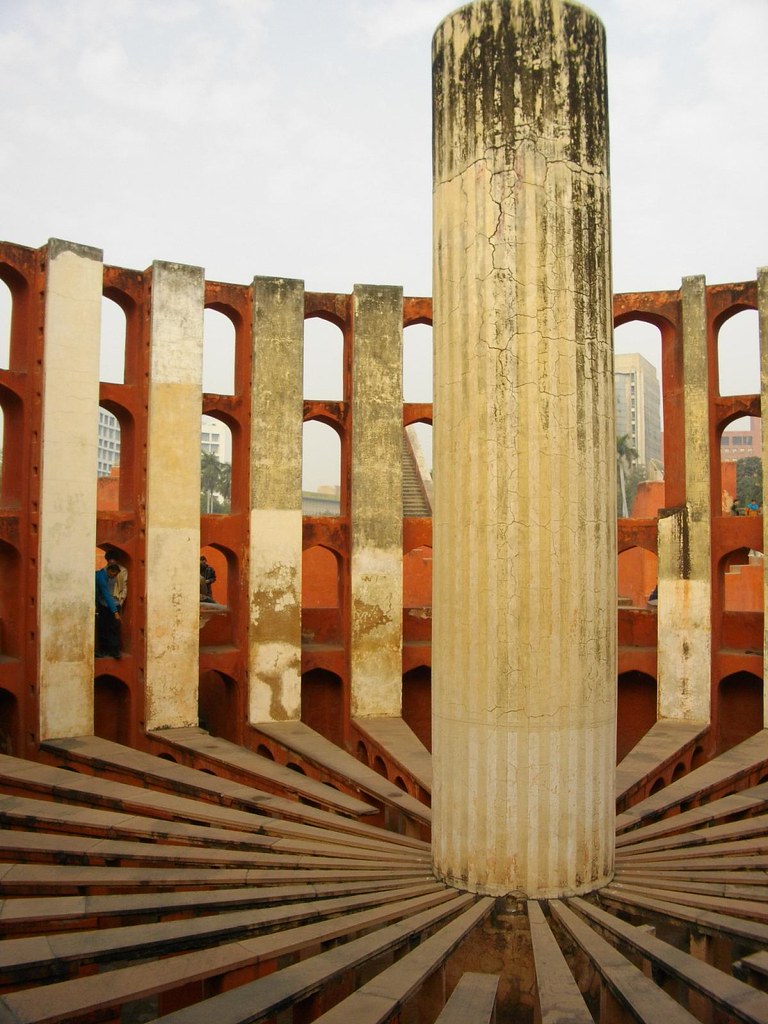
Rama Yantra which measures the altitude of celestial bodies - Chakra Yantra: This is equivalent of a wall of clocks registering local times in different parts of the world.
- Dakshin Bhitti Yantra: measures meridian, altitude and zenith distances of celestial bodies
- Rashiwalay Yantra: 12 gnomon dials that measure ecliptic coordinates of stars, planets and all 12 constellation systems.
-
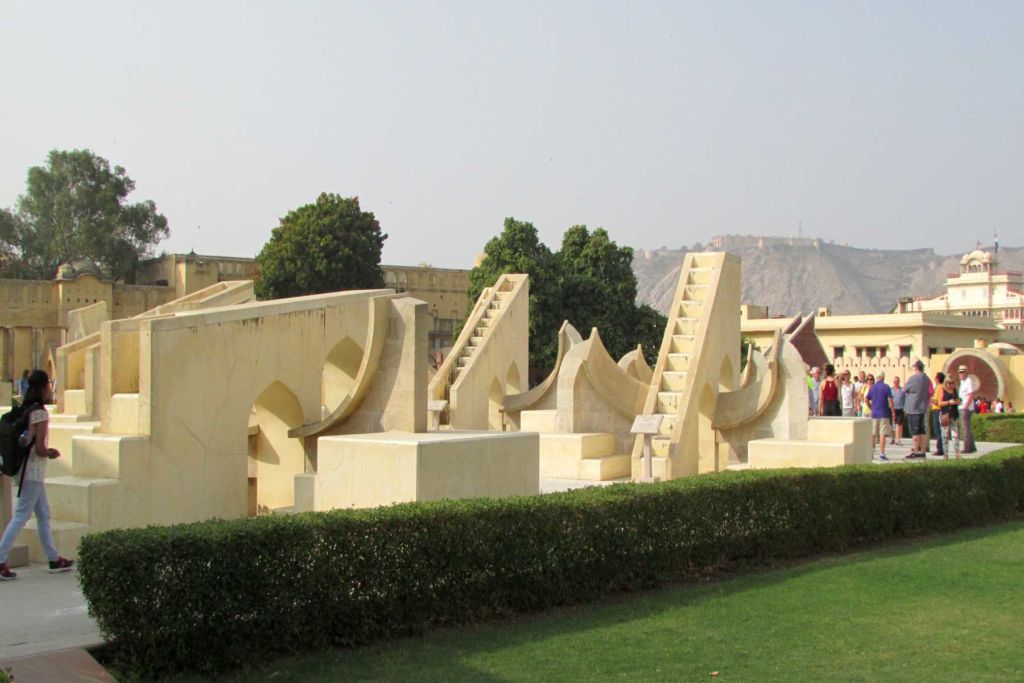
Rashi Yantra at Jantar Mantar in Jaipur - Digamsa Yantra. This is used to determine the azimuth of the sun, sunrise and sun set time and weather forecast
- Unnatamsha Yantra: It allows measurement of the altitude of celestial bodies.
- Yantra Raj Yantra : This is an adaptation of an Astrolabe , a medieval instrument for the measurement of time and position of celestial object. It is, one of the largest Astrolabes in the world, and it calculates the Hindu calendar.
- Narivalaya Yantra : to determine the sun’s hemispheric location
-
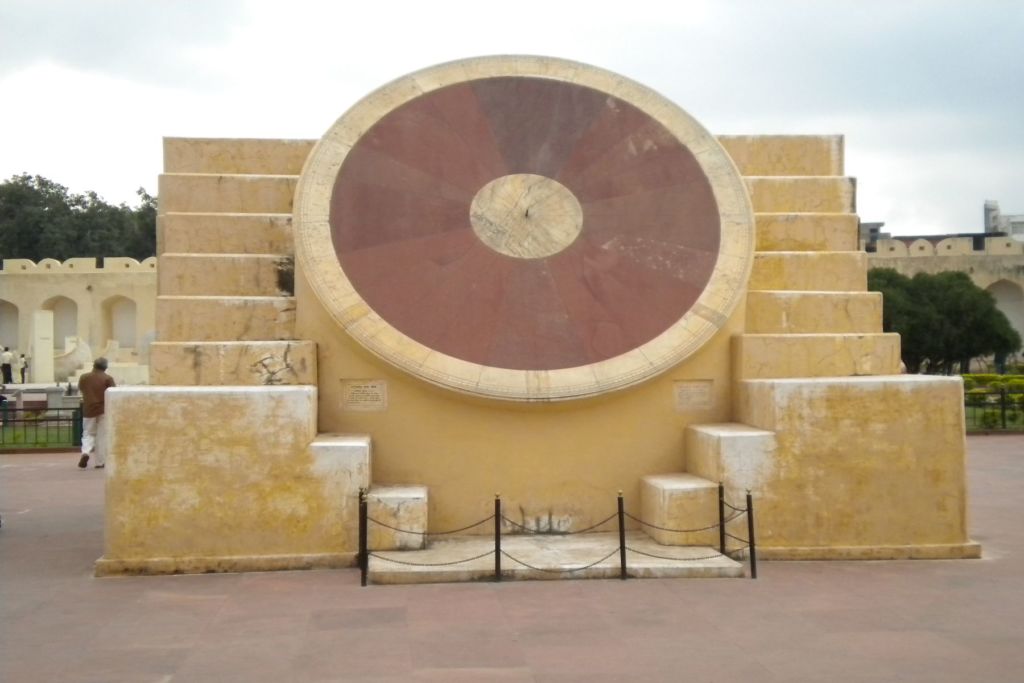
Narivalaya Yantra at Jantar Mantar, Jaipur - Mishra Yantra : predicts when it’s noon around the world
-
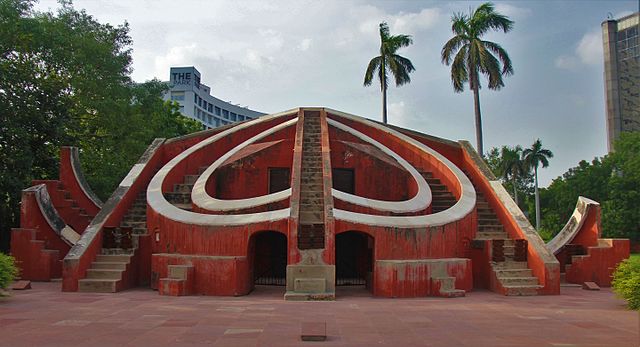
Mishra Yantra at Jantar Mantar, New Delhi - Dhruva Darshak Pattika : It computes the location of pole star with respect to other celestial bodies
- Shastansh Yantra : This is used to measure the zenith distance, declination and the diameter of the sun
What is the status of Jantar Mantar now ?
The Jaipur Jantar Mantar is the largest and the best maintained and preserved. Even today, it is used by astrologers to calculate the auspicious date for key occasions like weddings. Students of astronomy and Vedic astrology are required to take lessons at the observatory, and it is said that the observatory is the single most representative work of Vedic thought that still survives, apart from the scriptures.
Did you know that the Jantar Mantar at Jaipur was used as a filming location for a film called “The Fall”?
Jantar Mantar narrates the very ancient cosmological, astronomical and scientific traditions shared by a set of Western, Middle Eastern and Asian religions, over a period of more than fifteen centuries. However, just like other monuments, Jantar Mantar also lost its glory after Sawai Jai Singh’s demise.
Decline of the Jantar Mantar
After Sawai Jai Singh’s in 1743, his four sons started fighting with each other for the throne. At the same time, the Mughal Empire was breaking up which made whole of North India an easy target for the other rulers.
Delhi was looted by the Iranian ruler, Nader Shah, and by 1748, after the death of Muhammad Shah, the Marathas took over most of the North India . The Jantar Mantar at Delhi suffered because of these invasions. Besides, the environment was also responsible for causing damage to the Jantar Mantar. Due to the set up being outdoors and India being a tropical country, the observatories required frequent maintenance and restorations. This would not have been possible given the political turmoil in the region. Hence the maintenance of the observatories was neglected and they were left to deteriorate.
During the 19th century, even the Jantar Mantar at Jaipur was temporarily abandoned. However, reconstructions and restoration of the instruments were made for this Jantar Mantar later, and in the subsequent decades, efforts were made to maintain the site.
I had visited the Jantar Mantar, Jaipur as kid during one of our family vacations and I thought it was a large maze for kids to play. Once I grew up I decided to visit all the Jantar Mantars to understand what this was all about. Jantar Mantar is a clear testimony of the scientific temperament prevalent in India way back in the 18th century. The Jantar Mantar Jaipur which is still functional is a great example of coming together of science, society and beliefs.
For more such historical experiences in India, you could take a look at the article on Indian history from Indus Valley Civilization to Modern History
In case you are keen on visit Jantar Mantar , you could take a look at the itinerary of Rajasthan and cover the Jantar Mantar , Jaipur , as a part of this itinerary.
India is not just about history. In fact, there are many more facets to this ancient land – culture, spirituality, mystery, nature, wildlife and so on. Read more about how to explore the different facets in destination India .
How to reach Jantar Mantar ?
There are five Jantar Mantars in India in Jaipur, Delhi, Ujjain and Varanasi. All of them are well connected with different cities of India via flights, train and buses. In case you are visiting Jantar Mantar, Jaipur, you are very close to Fatehpur Sikri. Click here to know more about Fatehpur Sikri
Best time to visit Jantar Mantar ?
Jaipur is the only functional observatory and the rest can be considered as monuments and museums. . The best months to visit is from October to April. Summer is unbearable these states. Also, noon is the best time of the day to visit the observatory. During mid-day, the Sun is vertically above and it is easy to understand the process of interpretation of the readings of each instrument

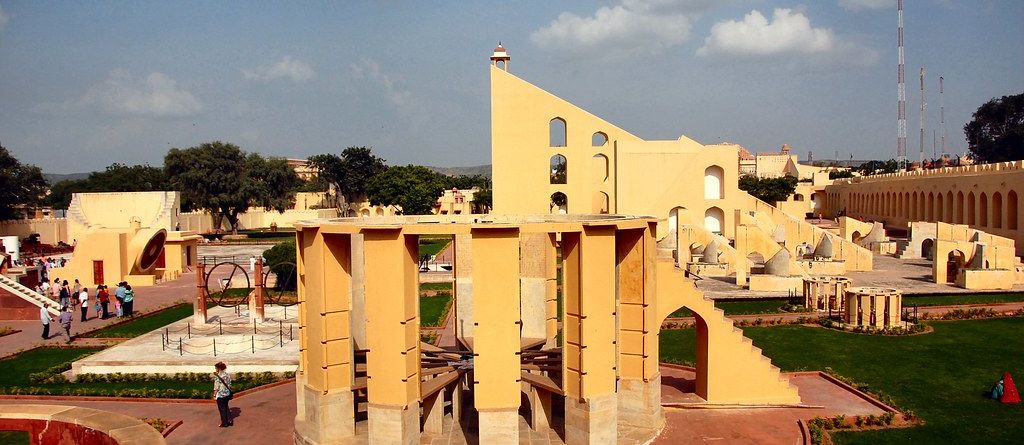
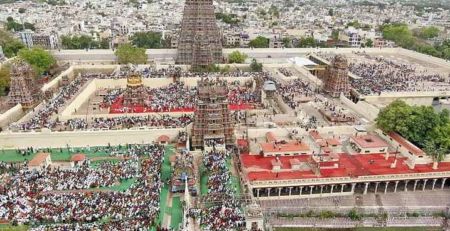


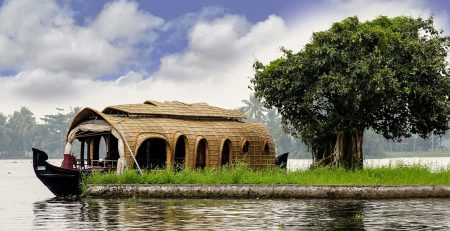






Leave a Reply